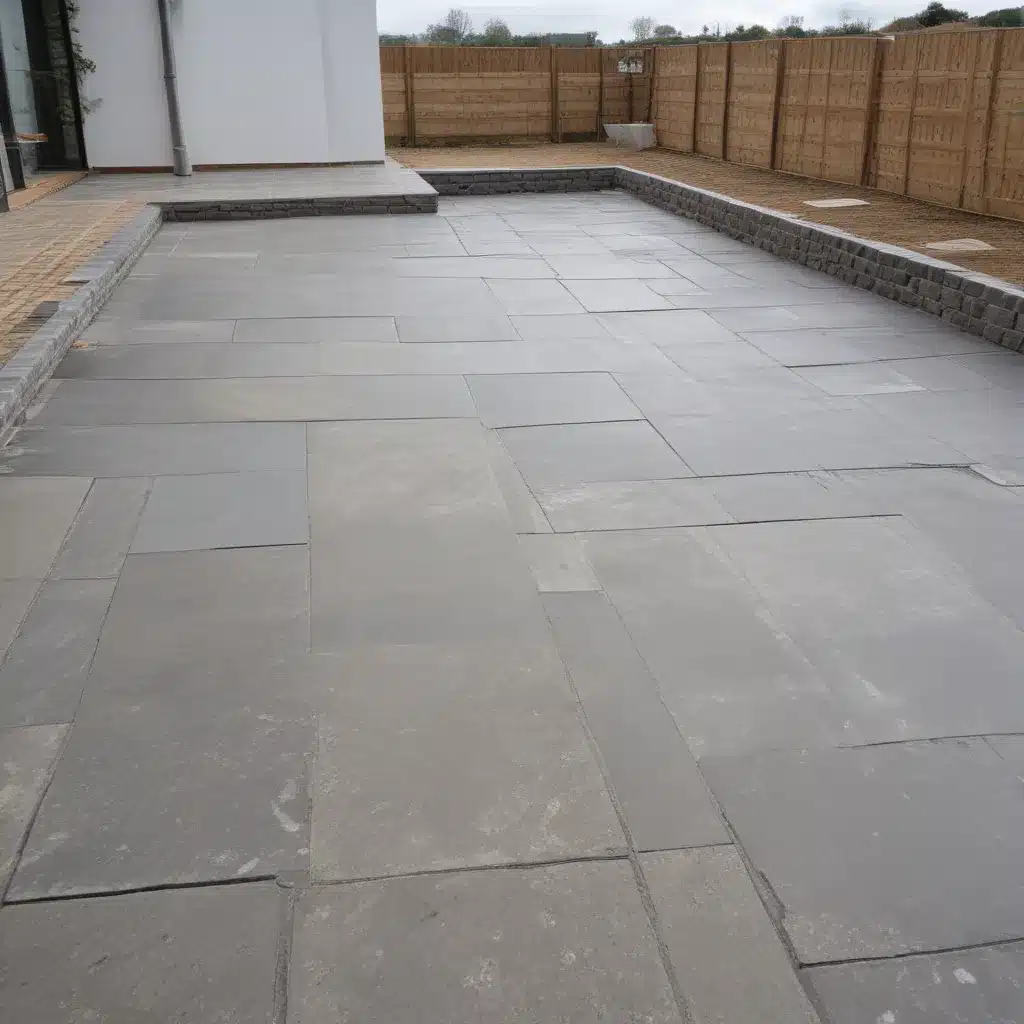
As an experienced outdoor living consultant, I know that creating a patio, garden, or other outdoor space is about more than just aesthetics. In today’s ever-changing climate, it’s crucial to design with adaptability in mind. By selecting the right paving materials, incorporating strategic landscape elements, and employing smart installation techniques, you can craft an outdoor oasis that thrives despite weather extremes.
Patio Paving Trends and Materials
When it comes to patio paving, homeowners have a wealth of options to choose from. While classic concrete and brick remain popular choices, sustainable paving alternatives are gaining traction for their environmental benefits and resilience.
Permeable paving systems, such as porous pavers or interlocking concrete units, allow water to infiltrate the ground rather than pooling on the surface. This helps mitigate flooding and reduces the strain on stormwater infrastructure during heavy downpours. These systems also contribute to groundwater recharge and prevent pollutants from being washed away. Permeable pavers come in a variety of styles, from natural stone to concrete, making them a versatile choice for enhancing your outdoor living space.
Natural stone pavers, like flagstone, bluestone, or travertine, are another climate-responsive option. These materials have inherent thermal mass, meaning they absorb and slowly release heat, helping to moderate surface temperatures. This can provide a cooling effect in hot climates and reduce the urban heat island effect. Additionally, natural stone is highly durable and can withstand freeze-thaw cycles, making it a smart choice for areas with extreme temperature swings.
Outdoor Design Ideas for Climate Adaptability
Beyond paving materials, the overall design of your outdoor living space plays a crucial role in its ability to withstand weather extremes. By incorporating strategic landscape elements, you can create a comfortable and resilient oasis.
Shaded seating areas are essential for hot climates. Strategically placed shade structures, such as pergolas or awnings, can provide relief from the sun’s intense rays and reduce heat buildup in the space. Alternatively, you can use trees, shrubs, or climbing vines to create natural shade and cooling.
Water-efficient landscaping is a must-have for drought-prone regions. Opt for drought-tolerant plants, such as succulents, cacti, or native species, which require minimal irrigation. Incorporate permeable surfaces, like gravel or mulch, to reduce water runoff and promote groundwater recharge. Consider installing a drip irrigation system to deliver water directly to the roots, minimizing evaporation.
For areas that experience significant temperature fluctuations, consider the thermal mass of your patio design. Incorporating elements with high thermal mass, like stone or brick, can help regulate temperature by absorbing and slowly releasing heat. This can provide a more comfortable outdoor environment, reducing the need for energy-intensive cooling or heating.
Patio Installation Techniques
Proper site preparation and installation techniques are crucial for ensuring your patio’s longevity and resilience in the face of weather extremes.
Site preparation and drainage are critical first steps. Ensure the ground is properly graded to direct water away from the patio and prevent pooling. Install a well-designed drainage system, such as catch basins or French drains, to efficiently channel excess water away from the area.
When laying pavers, focus on techniques that promote durability and flexibility. Use a sturdy, compacted base of crushed stone or concrete to provide a stable foundation. Leave appropriate gaps between pavers to allow for slight movement and expansion during temperature fluctuations. Incorporate expansion joints at regular intervals to accommodate changes in the soil and prevent cracking.
Patio Maintenance and Longevity
Maintaining your patio is key to preserving its beauty and functionality over time. Regular cleaning and sealing of the pavers can help protect them from weathering, staining, and deterioration.
Cleaning and sealing pavers should be done every few years, depending on the climate and level of use. This helps prevent the porous surfaces from absorbing water, which can lead to cracks and spalling during freeze-thaw cycles. Sealants also provide a layer of protection against UV damage, stains, and wear.
In the event of cracking or settling, prompt attention is crucial. Address any issues like soil erosion or tree root growth that may be causing the problem. Carefully lift and relay affected pavers, ensuring a stable, level base. For larger cracks or uneven sections, consider using a bonding agent or epoxy to reinforce the area.
Winterizing your outdoor living space is essential in cold climates. Protect any water features, such as fountains or fire pits, from freezing damage. Cover or store furniture and accessories to prevent weathering. If your patio features a pergola or other structure, ensure it is secured against high winds and heavy snow loads.
Cost Considerations and Comparisons
When budgeting for your climate-responsive patio project, several factors come into play, including material costs, installation expenses, and long-term maintenance requirements.
Material pricing can vary widely, with natural stone pavers generally being the most expensive option, followed by permeable pavers and traditional concrete. However, the long-term durability and low-maintenance requirements of some sustainable paving materials may offset their higher initial cost.
Labor and installation costs depend on the complexity of the project, site conditions, and the chosen paving system. Permeable pavers, for example, often require a more intricate base preparation and installation process compared to traditional concrete.
Long-term maintenance budgeting is crucial. While some paving materials, like natural stone, may have higher upfront costs, their durability and low-maintenance requirements can save you money in the long run. Factoring in the costs of regular cleaning, sealing, and potential repairs can help you make an informed decision.
By considering patio paving materials, outdoor design strategies, installation techniques, and maintenance requirements, you can create an outdoor living space at that thrives in the face of weather extremes. With the right approach, your patio can be a year-round oasis that enhances the beauty and functionality of your property for years to come.

